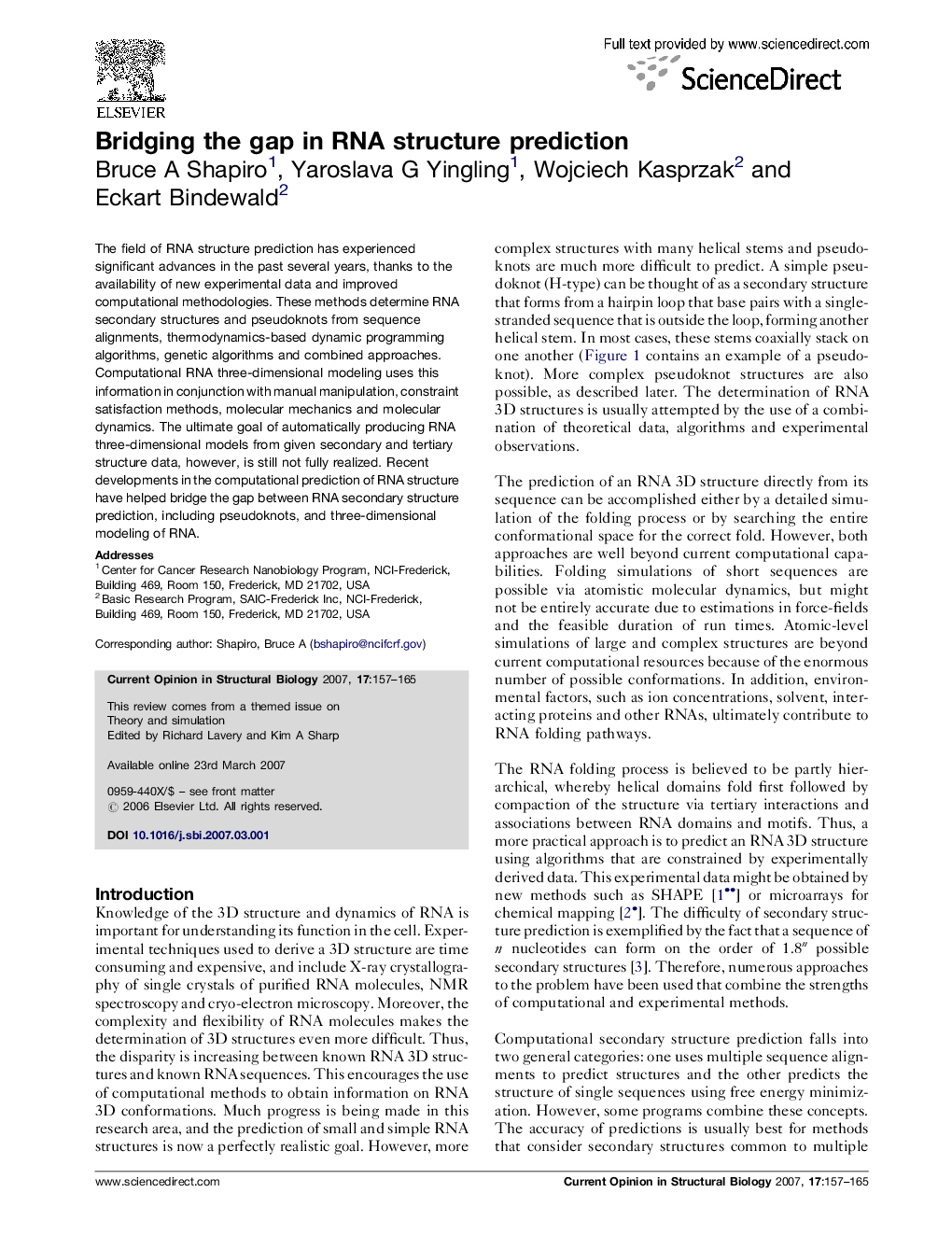| Article ID | Journal | Published Year | Pages | File Type |
|---|---|---|---|---|
| 1979800 | Current Opinion in Structural Biology | 2007 | 9 Pages |
The field of RNA structure prediction has experienced significant advances in the past several years, thanks to the availability of new experimental data and improved computational methodologies. These methods determine RNA secondary structures and pseudoknots from sequence alignments, thermodynamics-based dynamic programming algorithms, genetic algorithms and combined approaches. Computational RNA three-dimensional modeling uses this information in conjunction with manual manipulation, constraint satisfaction methods, molecular mechanics and molecular dynamics. The ultimate goal of automatically producing RNA three-dimensional models from given secondary and tertiary structure data, however, is still not fully realized. Recent developments in the computational prediction of RNA structure have helped bridge the gap between RNA secondary structure prediction, including pseudoknots, and three-dimensional modeling of RNA.
